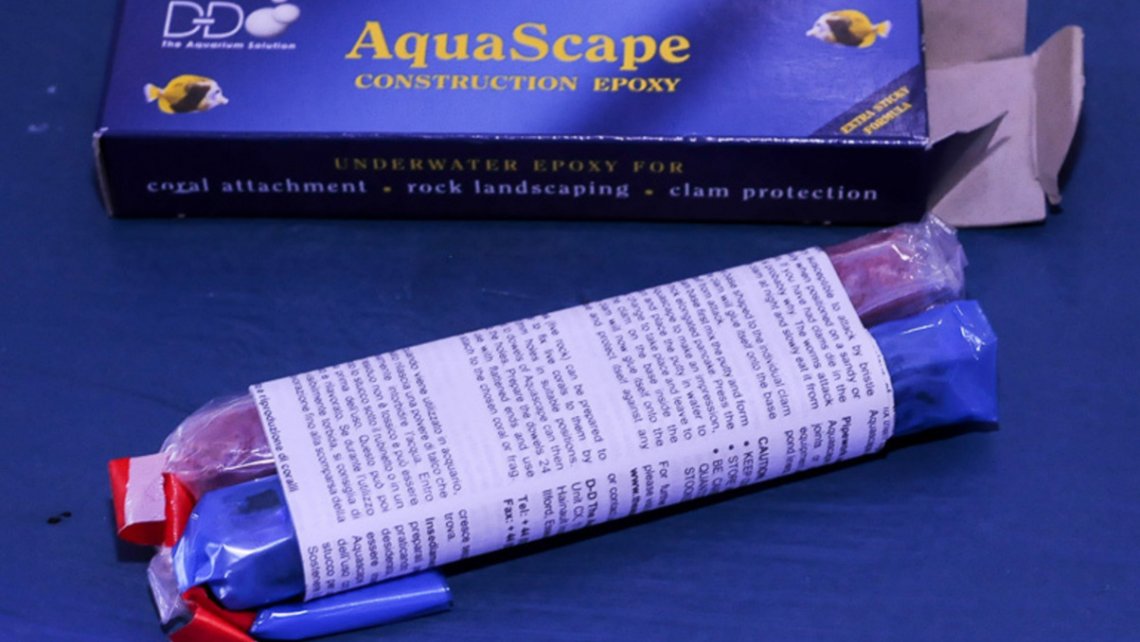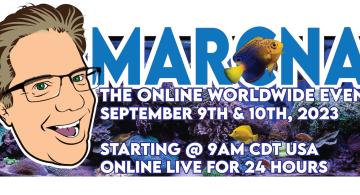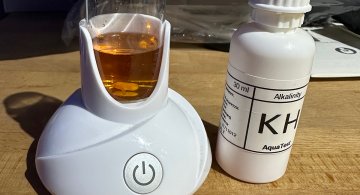D-D AquaScape Putty
When it comes to securing corals in our tanks, we need to use putty when super glue gel won't suffice. The 2-part epoxy putty offered by D-D The Aquarium Solution is the brand I recommend most. It is reef-safe, comes in a coralline-pink color, and lasts a long time. I often refer to it as "Deltec putty" - I sell it here: https://melevsreef.com/reefshop/dry-goods/d-d-aquascape-putty
This product has been around for years, but I never did a full write up about it until now.
It's recommended to always wear some type of gloves when mixing two-part putty to avoid absorbing the chemicals in your skin. One presenter described how he used putty for years with bare hands, but one day he had a bad reaction and ended up in the emergency room, and decided from that day forward to wear surgical (or tattoo) gloves. A single box of gloves will last a hobbyist for years; get in the habit of using them.
Any time I saw this small box on display at MACNA, trade shows, or elsewhere, I'd be quick to buy one or two packs to keep on hand. Be aware that this product also comes in grey, clearly marked on the back of the box. Get the one that looks purple, since it blends in with our rockwork more readily.
Wrapped individually, each stick of putty will feel soft to the touch. This particular unopened package was in my reef gear for more than two years, but still felt brand new.
It's easy to use. Open up the bags carefully, that way you'll be able to seal the remainder by rolling the plastic tightly around the colored dough and twisting the end for storage. If you keep it air-tight, it will stay pliable for future use.
Usually I tear off equal parts (about 1") of the putty and mix it up until the coloration is consistent throughout. Kneading it into a uniform color will take about 40 seconds.
Now all you need to do is press some of the putty on the bottom area of a frag plug and press the base against some rock in the tank, as it works underwater. As the excess putty oozes out, you can press it into place around the base, securing the coral nicely. SPS corals grow much more quickly when they are stable. Corals that wiggle or rock back and forth take longer to grow out usually.
The putty is a little sticky, but if you can't get a piece to really stay in place initially, you can apply some Super Glue Gel to the putty and then press putty in place, and the glue will help hold it. This method works well for vertical surfaces. The putty cures underwater to harden fully. Each batch lasts about 20 minutes after being mixed up, which is another good reason to only use a little at a time. If you end up with too much, it will be wasted.
D-D AquaScape can be used to tie smaller rockwork together, and can also be used patch a leaking bulkhead. (I know a guy who successfully stopped a leak at the bottom of his display when a closed loop bulkhead was leaking!)
It's usually best to only secure a few corals per session. Consider the size of your tank, the water volume and the risk of pollution because of overdoing this during a single afternoon. Even with the reef tanks I've maintained (a 280g and now a 400g), I usually only glued down about four or five corals per day. The rest can wait another day or two.
Another great use for this product is for "coral pegging." Take a 2" piece of rigid airline tubing, press a lima-bean size amount of putty onto the tubing at one end. Make a small depression in the putty, apply a blob of Coral Glue in the depression and press a branch of SPS coral into the glue. Let's call it an acropora. Now that the acropora has been placed, use the putty to squeeze it around the acro, and it is officially pegged. If your rockwork has small holes drilled in it, you can insert the tubing into the hole and your coral is safely positioned in the tank. Here are two examples, once placed in my reef.
When you're done, peel off those gloves and wash your hands. Congrats, you just stabilized some corals in your tank safely. Be sure to teach others so they too can benefit.

















